
Coffee on the slopes of Cosdon Beacon.
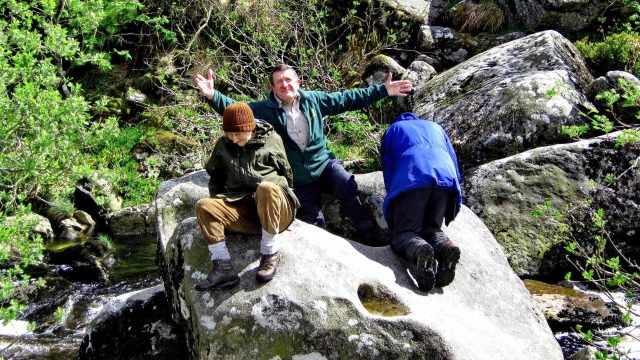
At the Tolmen stone.
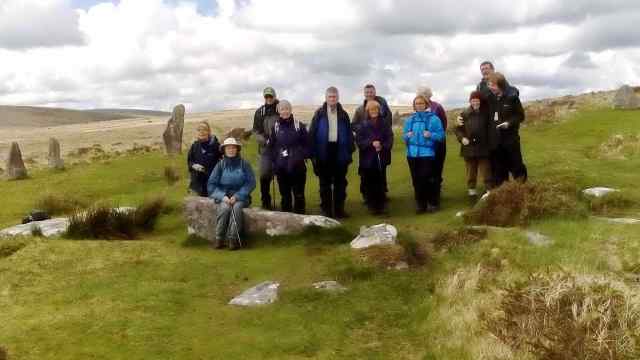

Coffee on the slopes of Cosdon Beacon.

At the Tolmen stone.

Undeterred by wind and rain 8 people joined Bill Radcliffe for a walk around Royal Hill, Princetown on Easter Saturday. We started down Tor Royal Lane, past ‘Tor Royal House’ (now Tor Royal Farm), built by Thomas Tyrwhitt for himself when he was building ‘Prince’s Town’ in the 1780s. We then joined the track known as Conchie’s Road, built by conscientious objectors housed at Dartmoor prison in the First World War. After a short while we left the track and were expertly led in the mist over rough and often apparently featureless ground to eight cists, some with associated cairns.

Intrepid walkers looking at 8 Royal Cists.
A sheltered spot, and a break in the rain, allowed for a dry lunch, but this improvement was short lived and walking back over Royal Hill, and Royal Tor itself, was sometimes hard going. “I’ve never been so wet with clothes on” said one apparently happy walker.
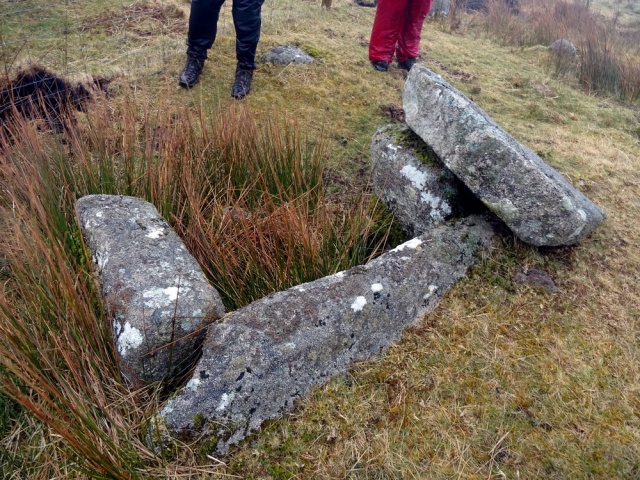
Joan Ford’s newtake cist, at SX 63140 72169.
Thanks to David Turrell for some atmospheric photos including a cairn near the summit of Royal Hill, with cist in the centre, and the cist just inside Joan Ford’s newtake wall.
On 22nd March 12 DPA members were given a guided tour of South West Water’s hydro power station at Mary Tavy.
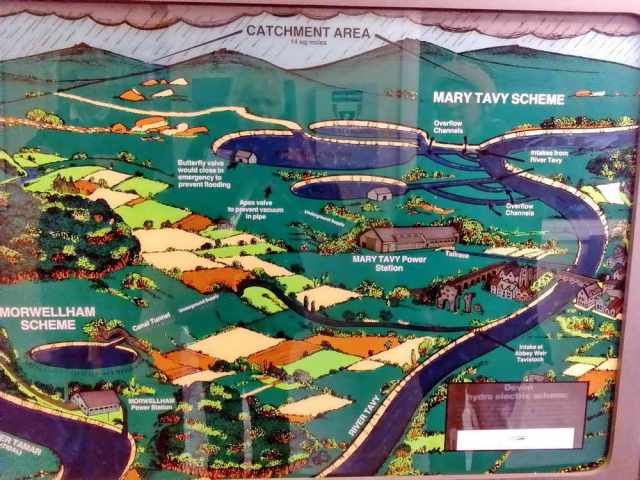
Diagram of the catchment area.
Karl Jones, Asset Manager for the site, was an excellent, informative and enthusiastic guide. Karl explained the origins of the power station, which is now 84 years old and has two sets of turbines. Water is abstracted under licence from leats taken off the River Tavy in varying volumes depending on the amount of water in the river and reaches the power station turbines (which have all been maintained unchanged since installation over 70 years ago) via the Wheal Jewell and Wheal Bennetts reservoirs and pipes with diameters of up to 49 inches.
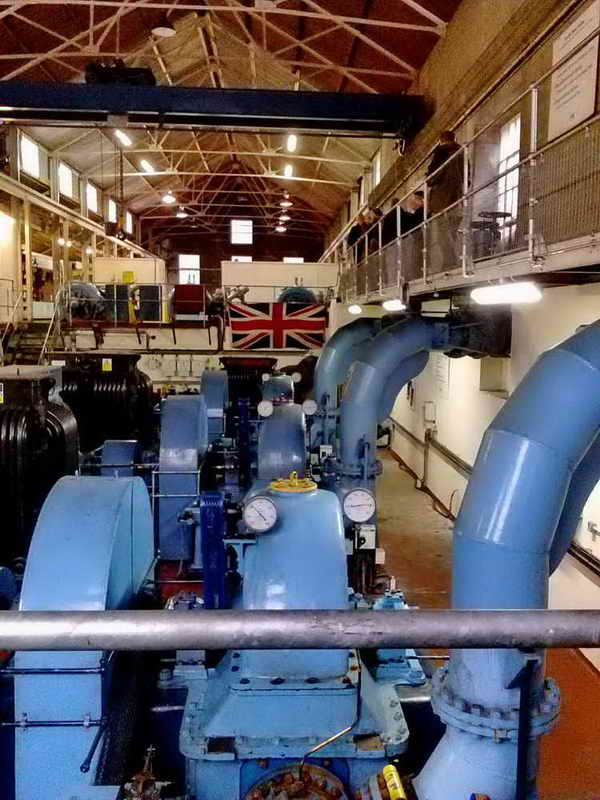
The turbine hall.
The photos show the catchment area, the turbine hall and our guide, Karl Jones chatting with DPA members in the workshop. Altogether a fascinating glimpse into an example of use of one of Dartmoor’s principal natural resources. The site will be open to the public under the Heritage Open Days scheme in early September – see www.heritageopendays.org.uk – and is well worth a visit.
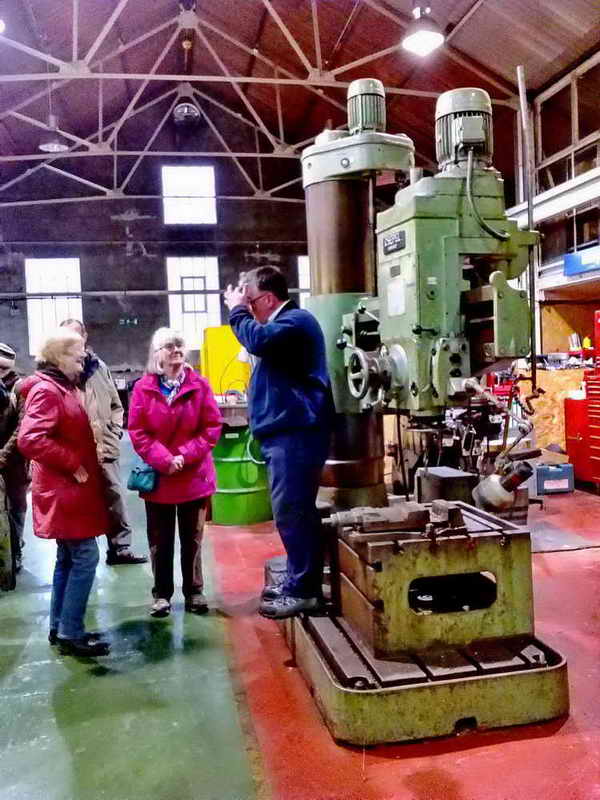
The workshop.
Technical information
There are two water “plants” at Mary Tavy. No. 1 Plant (commissioned 1932) takes water from the River Tavy via a leat to a 2.5 M gallon reservoir 700 yards from the power station. This drops 230 feet and provides enough power to drive three Francis turbines. These, in turn, drive three Crompton Parkinson alternators that produce a total of 710 KW at 415 volts.
No. 2 Plant (commissioned 1937) takes water from Tavy Cleave 1,100 feet above sea level. This travels along an old mine leat to the 16M gallon Wheal Jewell reservoir. This water drives three Pelton Wheel turbines which drive three 650 KW English Electric alternators.
The output from both plants is stepped up using transformers to 11,000 volts and is synchronised to the National Grid. When combined with the nearby Morwellam Power Station, the total power produced is 3.5 Megawatts which is enough to supply a town the size of Tavistock.
The DPA conservation volunteers had near perfect weather for their controlled burn on DPA land at High House Waste on Thursday 17 March 2016.
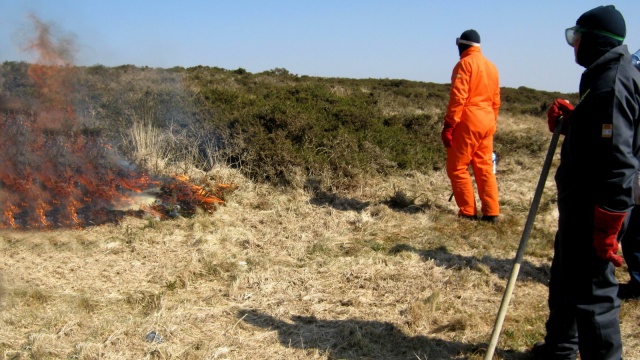
The swaling burn gets under way.
This annual swale is part of a land-management strategy for controlling gorse, and helps to provide a mosaic of habitat with a diversity of moorland plants, including heather and bilberry.

The DPA conservation volunteers who took part in the swaling.
All went well this year with a good result and, despite a rather brisk breeze: volunteers’ fire-beating techniques, equipment and preparations successfully met the challenge of containing the flames!
As a result of the Dendles workday cancellation, on Thursday 10th March, any interested volunteers and thus potential drivers were invited to Roborough Down to see the spanking new Isuzu D Max Pick-up in shining white livery with the DPA logos.
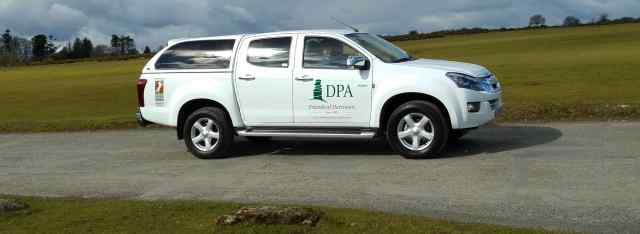
The DPA vehicle on Roborough Down.
In beautiful sunshine Derek arrived in the pick-up and showed off its potential to all, from bonnet to boot, inside and out (see photo below) …..
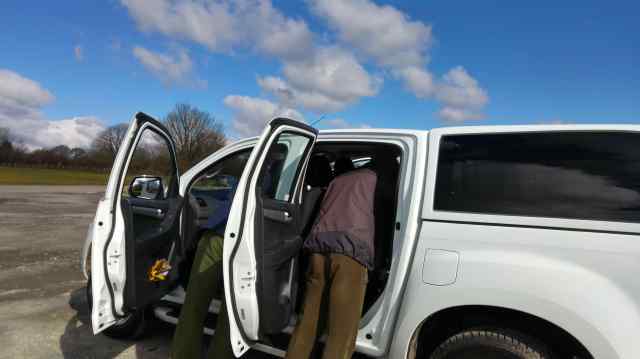
Examining the vehicle, from bonnet to boot.
Under his expert tuition and guidance, Stephen, Bob, Sylvia, John V, Tim and Ann each demonstrated their driving and reversing techniques using a combination of mirrors beepers and camera, with varying degrees of success!
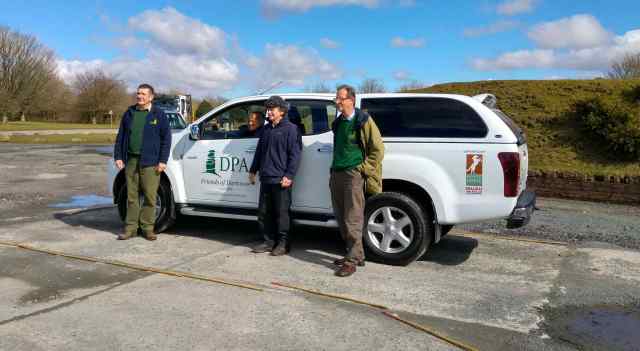
DPA volunteers posing for the cameras.
Apart from the obvious tool carry capacity, this 5 seat version gives a smooth spacious ride to rival some saloon cars.
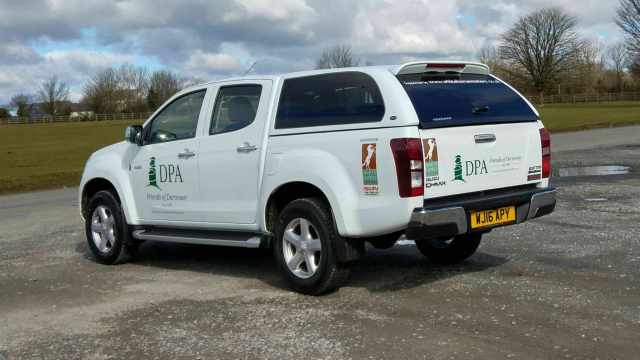
The Isuzu flying the DPA flag on Dartmoor.
It seems only a few weeks since the idea of this vehicle was conceived and now thanks to Derek and the help of his friends its here on the tarmac!
Well done Derek and colleagues.
Next stop…….off-roading on Raddick?!!!!
This article is reproduced with permission from the CampaignerKate blog, HERE.
The Dartmoor Preservation Association conservation volunteers returned to Common Wood on 22 February. This was our sixth day here. We had spent five days, spread over three and a half years, on the slope above the leat clearing the vegetation to make way for Pearl Bordered and Small Pearl Bordered Fritillary butterflies. This time we climbed down through the wood below the leat to the marsh to improve the habitat for the Marsh Fritillary butterfly (see previous blog).

In the bottom there is a fairly large open patch of rare Rhôs pasture and, a little way upstream, a much smaller patch. The plan is to remove the scrub to make a larger open patch, to restore the Rhôs pasture and increase the area of Devil’s Bit Scabious (Succisa Pratensis) which is the food plant of the Marsh Fritillary.
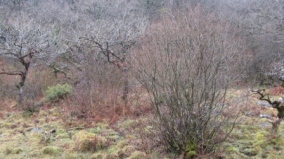

We were led by Jenny Plackett, Butterfly Conservation’s Two Moors Threatened ButterflyProject Officer, who advised what vegetation to remove and what to leave. After an initial discussion we got to work.


As we didn’t have a chain-saw we left trees which we might otherwise have removed, but with a power-strimmer our workers made a significant impact on a patch of large gorse. We made two windrows from vertical hazel stakes and stacked the branches around them, creating a hedge-like structure. This is a neat way of dealing with the waste.


Jo Loosemore from BBC Radio Devon joined us for part of the day, to interview us for her Sunday morning programme. She spoke to Sylvia Hamilton, our co-ordinator, Jenny Plackett and me, and got some sound-effects of us sawing wood.


By mid-afternoon we had achieved all we could in that part of the marsh. We had created a broad corridor between the two open patches, to encourage the Marsh Fritillaries to spread and mix with neighbouring populations, which is good for the gene pool.
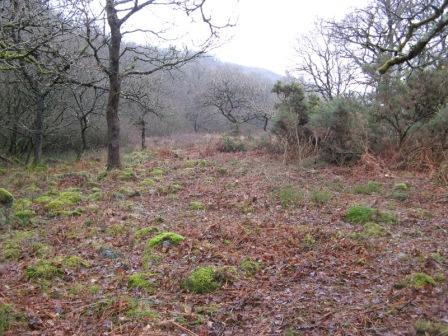
And so we packed up our gear and headed back up the hill and along the leat to Hillbridge, where a welcome tea awaited us.
A dozen DPA members met up on Valentine’s Day and walked from just north of Cadover Bridge. We passed a number of prehistoric remains on the way to Dewerstone and then walked down into the Meavy valley , joining the West Devon Way to Clearbrook and up again via Hoomeavy to Wigford Down where we saw a number of Bronze Age cairns. A pleasant winter’s day.

Cadover Cross
Thursday 4th February 2016 saw twelve DPA volunteers gathering in the car park at Clearbrook from where we made our way to the spot at which we originally started the Devonport Leat project. We carried some tools by wheel barrow, as we did some years previously. We started work not quite where we did originally because today we started at the tunnel exit, originally we started at the tunnel entrance (photos below), on 2nd Sept. 2011. We reached this point during the course of today’s work.
We had some discussion today about the leats and their history. Links to their origins etc. can be found via this web page.
Two photos showing “before” and “after” today’s work …..
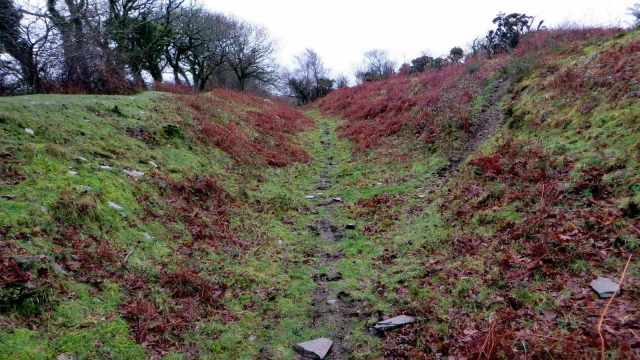
Today – “before”
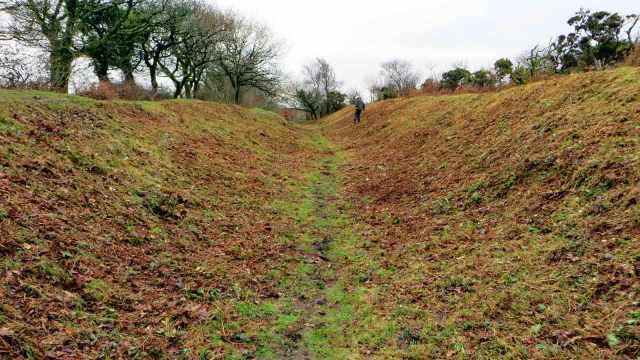
Today – “after”
The photograph below reminds us how the tunnel roof area, between the two embankments, looked before we started working here ….. the footpath on the top of the south embankment is seen to the right of the photograph – there was no point going down between the embankments to take a photograph!
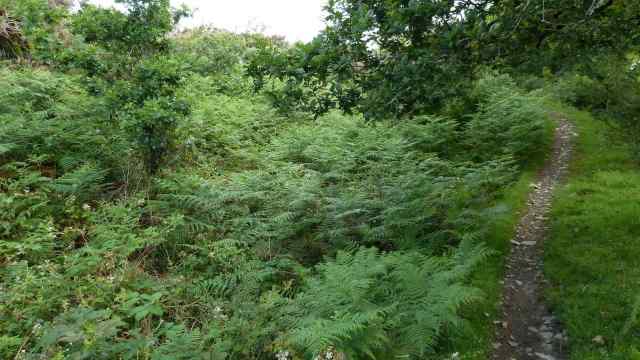
The view before clearance work started in Sept. 2011; looking towards Yelverton.
After a short session of organising who does what …..

Getting “sorted” prior to starting the work.
We began the task of removing regrowth mainly of bramble, mixed with dead bracken.
Today’s volunteers were Chris Francis, Claude Williams, Derek Collins, Elaine Viant, Hilary Luce, John Viant, John Watson, Keith Ryan, Rachel Watson, Stephen Barrow, Sylvia Hamilton and Val Barns: 12 volunteers in total. Elaine kindly brought two cakes: Ginger and Honey – both rather nice.
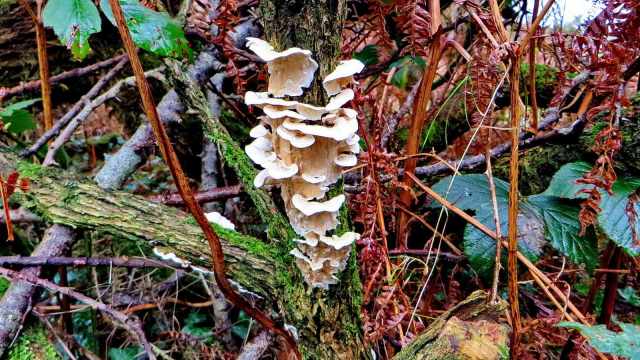
Unidentified white fungus, growing on gorse …..
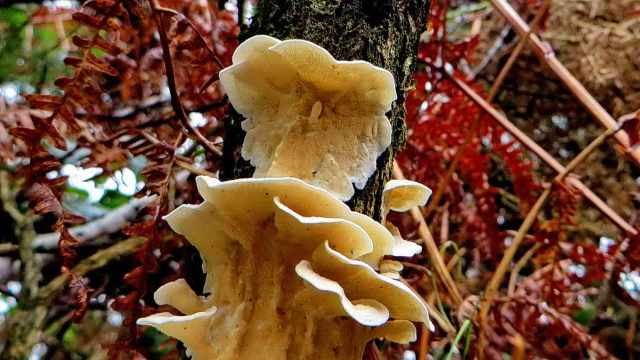
Closer view of the fungus, from below.
Some cutting is done by hand, using loppers and some volunteers bring their own “hooks” or sickles, but most is done by brush-cutter …..
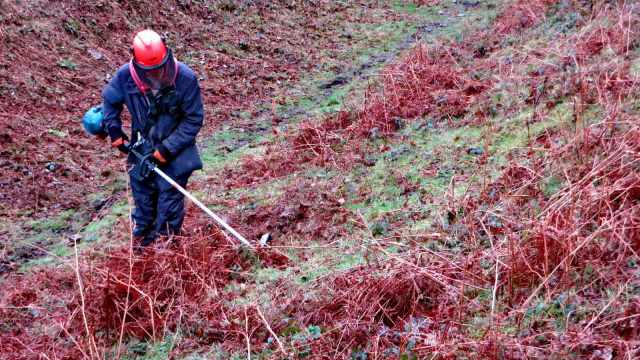
Cutting by brush-cutter …..

Gathering cut material.
The photos above show work on the roof of the tunnel that the leat flowed through when it was running. The reason for covering the leat was ostensibly to prevent bits of tree and animals from falling into it.
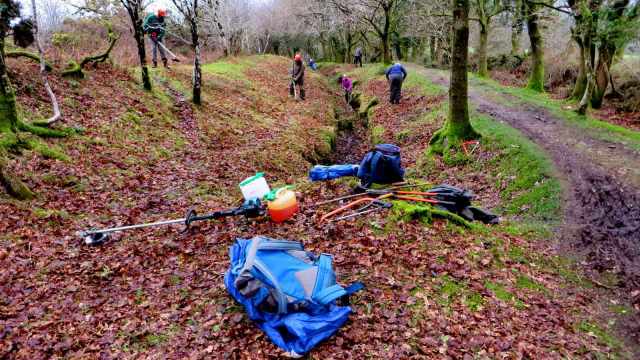
View from the roof of the tunnel entrance, looking towards Yelverton.

DPA volunteers doing what DPA volunteers do!
The photograph below is truly a “before” image …..
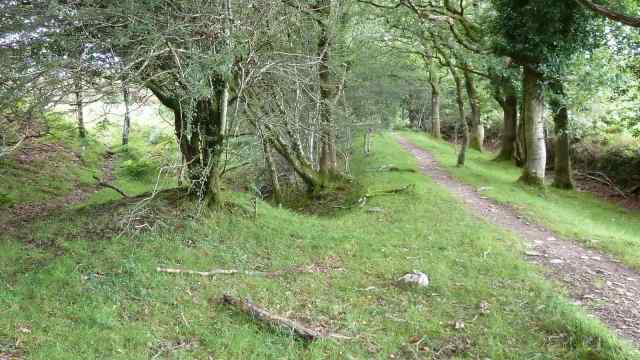
Standing on the roof of the tunnel entrance in Sept. 2011.

Devonport Leat tunnel entrance – a low angle view.
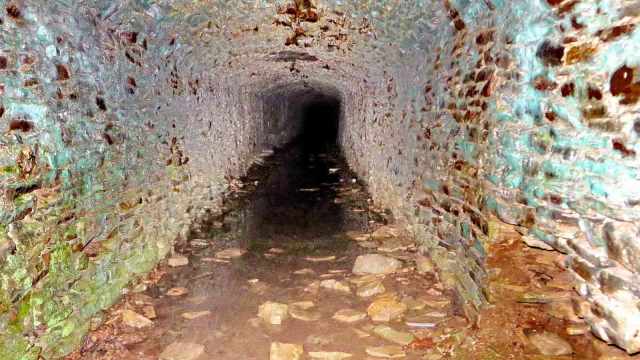
Inside the tunnel entrance.
The leat contained a little water and this was also true just inside the tunnel. A journey through the tunnel can be seen here.
The length of leat cleared today was 261 metres (285 yards).
Interestingly, we saw a wasp today and a song thrush was heard singing – Spring must be almost here.
A second site for the Butterfly Habitat Conservation Project was started on 29th January 2016.
Following agreement by the DPA Conservation team to continue supporting the 2 Moors Threatened Butterfly Project, we agreed with Jenny Placket , the project officer, to carry out work on a second site on Roborough Down to improve habitat for Pearl-bordered and High Brown Fritillary butterflies, by removing trees and gorse which overshadow the bracken feeding areas.

Before work started.
The site selected was to the south of Bedford Bridge old railway viaduct although access to the area was from the Longash road.
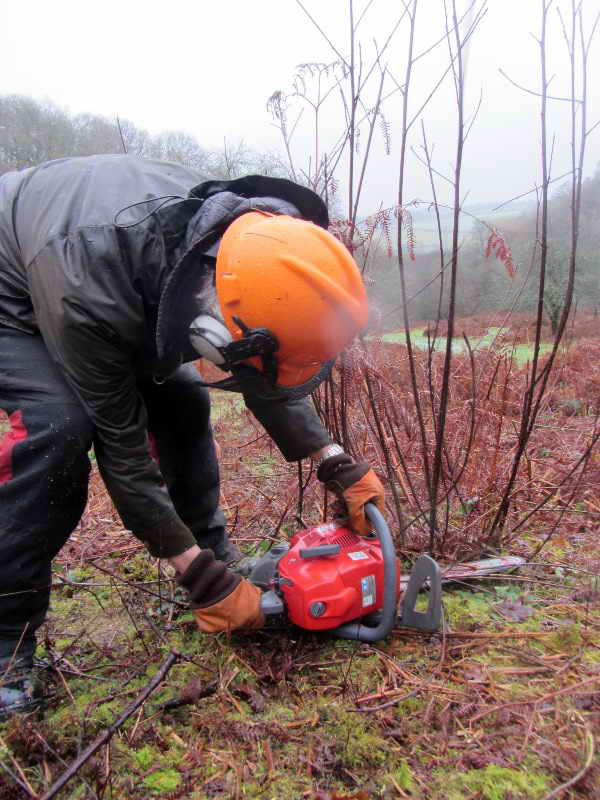
Chain-sawing regrowth from previous cutting, prior to treatment.
January was a particularly wet month with several of the DPA conservation days being cancelled due to the adverse weather conditions.

Collecting regrowth.
The forecast for the Roborough day varied during the week before and whilst not being completely favourable the decision was taken to proceed with the workday.
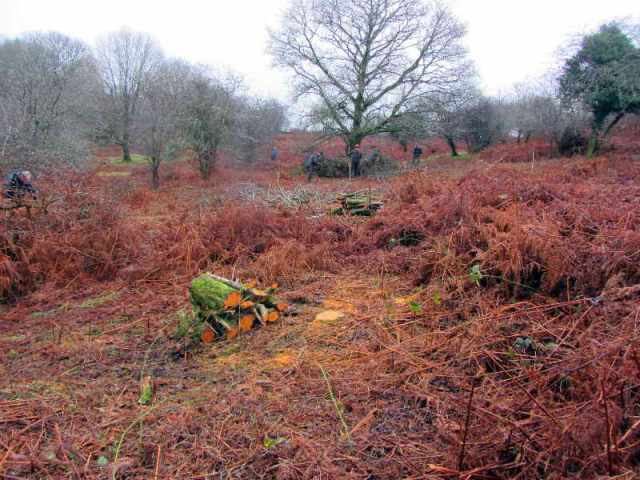
Felled tree.
Derek Collins’ son. Christopher. was again able to assist us with transporting tools and bags to the work area in his Landrover.
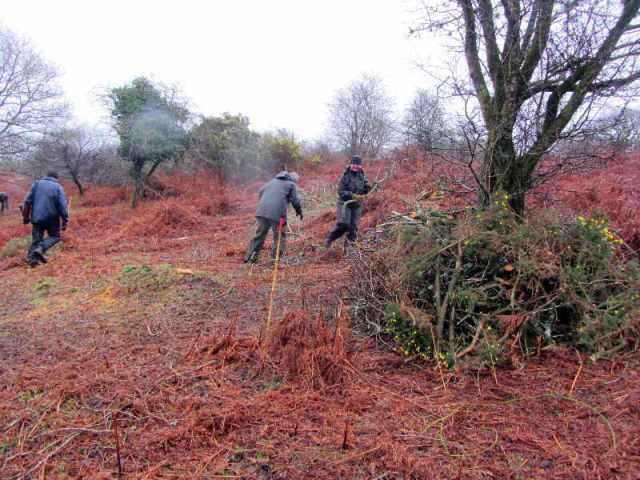
The cuttings are stacked neatly.
Christopher and Keith worked with chainsaws cutting the trees and stumps from previous clearance whilst the other team members stacked the brash in piles clear of the bracken.
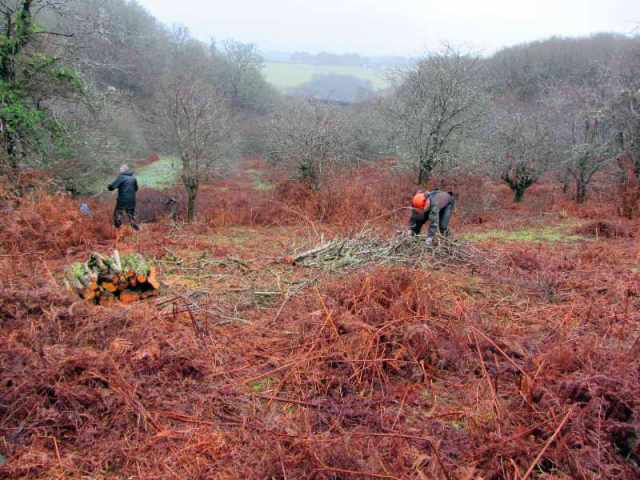
Collecting cuttings.
A steady drizzle continued for most of the morning with a slight let up around lunch time and then set in again as we packed up and returned to the carpark mid afternoon.
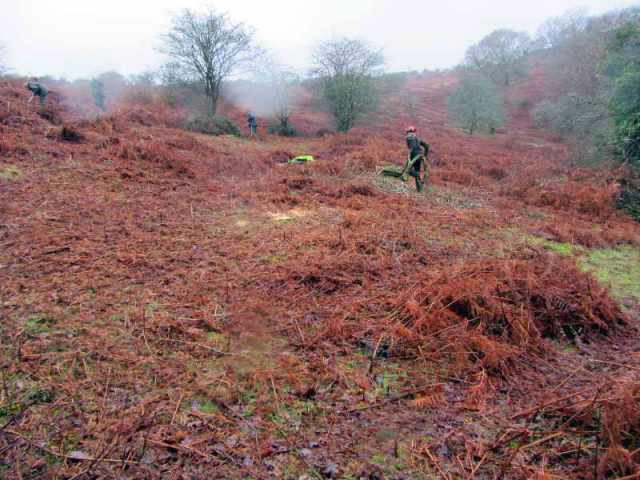
Nearly finished.
Thanks to all those volunteering for the project – Chris Francis, Claude Williams, Derek Collins, Christopher Collins, Hilary Luce, Hilary Marshall, John Lucas, Keith Ryan, Peter Butcher, Rachel Watson, Sylvia Hamilton and Val Barns.
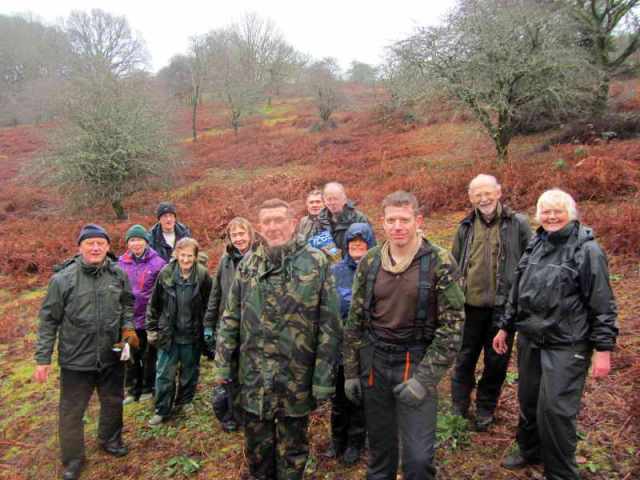
The group.
A special thanks to Sylvia for the cake, and to Christopher for giving his time and providing the transport.

The site after work was finished.
Further information on the Butterfly Project can be found on:
http://butterfly-conservation.org/4497/The-TwoMoorsThreatenedButterflyProject.html
Stephen Barrow
Photos: Jenny Plackett
Friday 8th January 2016 – the DPA Conservation Team reached another landmark by finishing the clearance work along Drake’s Leat that brought water into Plymouth on 24th April 1591. We had started with bracken cutting on 16th June 2015. Bearing in mind that we had cancelled three work days before Christmas due to bad weather, this was a welcome achievement. The work is a lot easier now that all the big gorse is already removed – that work having started in Jan/Feb. 2007.
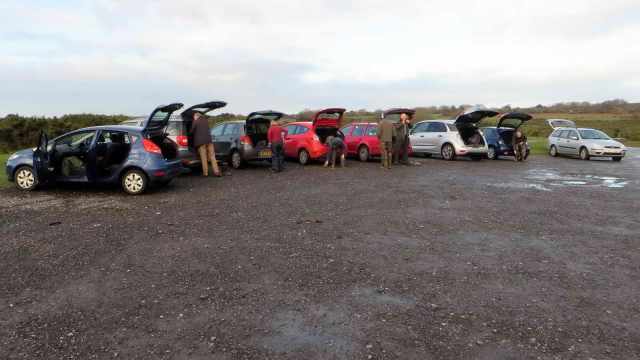
Car park scene.
You can see some funny things in the car park, with folks strugglimg out of or into various items of garb! Luckily, there’s none of that in this photograph!
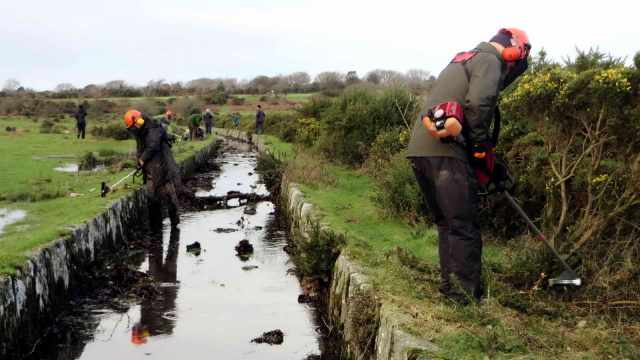
Water was running in the leat.
After all the rain we have had recently, it’s no wonder water was running in the leat. This is runoff from the old WW2 aerodrome that was RAF Harrobeer close to Yelverton. The runoff is leated away via William Crymes’ leat (1599) back to the River Meavy.
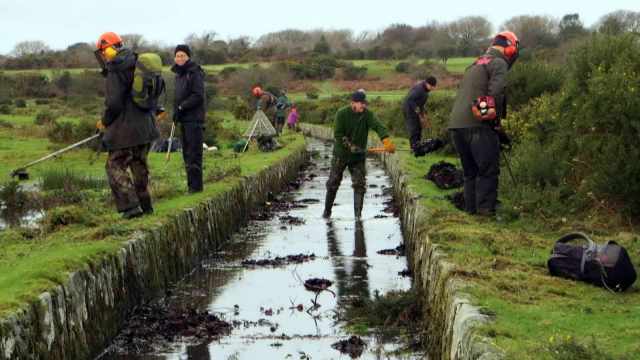
Wading while we worked!
The photograph above shows the sort of work that was done today – using brush cutters, loppers, a little sawing and a lot of forking out leaves.
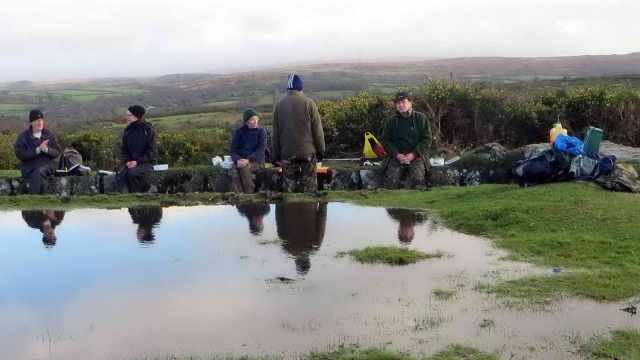
Reflections at lunch time.
I tried to be clever with this caption above …..
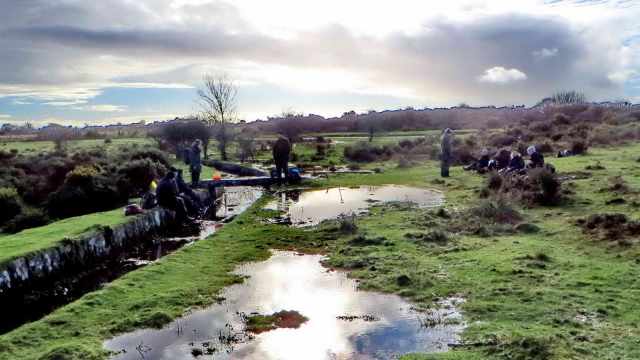
“Arty” reflections at lunch time.
….. and I failed with this one – it was taken looking into the sun and was going to win us a prize! This is the first “clapper” bridge over the leat, at SX 51601 65320.
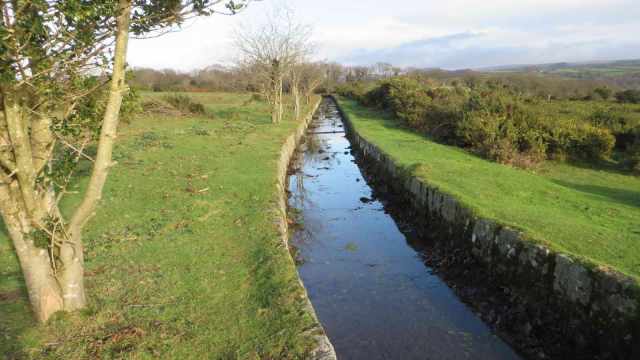
Another cleared section, except for some leaves on the water.
The valiant volunteers today were: Chris Francis, Derek Collins, Elaine Viant, Helen Wilson, John Lucas, John Viant, John Watson, Keith Ryan, Rachel Watson, Stephen Barrow and Sylvia Hamilton: 11 in total.
I have once again to say “Thank you” to Rachel for bringing chocolate brownie cake (superb) as well as an excellent fruit cake. It was worth the journey just for these! In a moment of flippancy, my email to the group about the impending work day included the line: “All the usual addenda apply, meet for 10 am, bring refreshments, sensible clothing, cake for Keith, etc.”
We do have fun in the DPA Conservation Team! You are welcome to join us – especially if you bring cake! Even without cake, our green gym exercises are completely free ….. why not come and “have a go”?
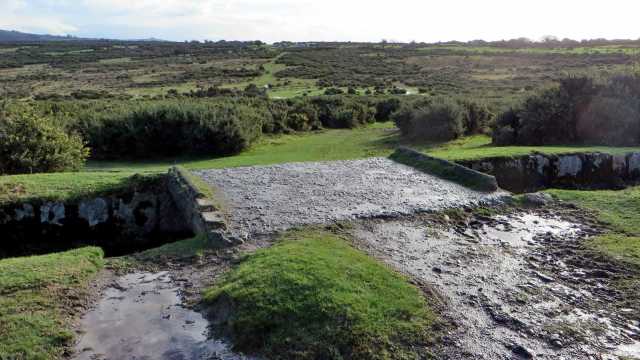
A modern, wide concrete bridge for commoners’ vehicles.
The photograph above shows the second bridge we came to, at SX 51694 65433.
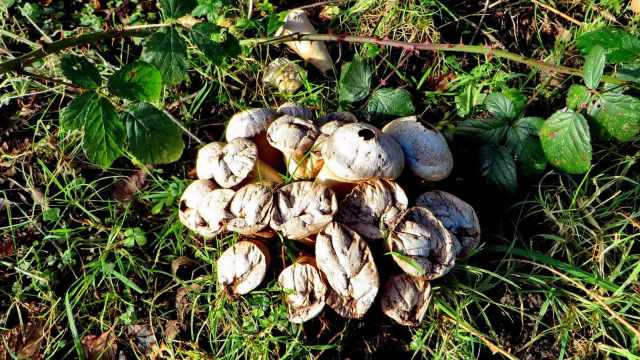
Lycoperdon perlatum – a common “puffball”.
There were several clumps of a stalked puffball mushroom in the vicinity of the leat at the far end, towards Yelverton. A collection of images can be seen here, in the results of a Google Images search.
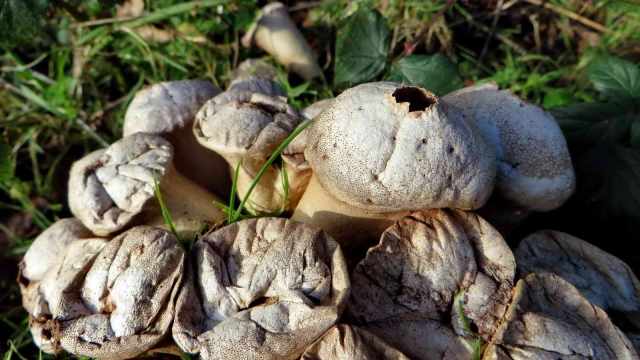
“These fungi may be found in grassy places at any time during the summer and autumn” – according to WPK Findlay in “Wayside and Woodland Fungi”, Warne, published 1967 & 1978, page 80. They are obviously past their best in these photographs, taken today, in January.

A fairly presentable semi-close-up of an individual mushroom.
More information can be found on Wikipedia – Puffball.
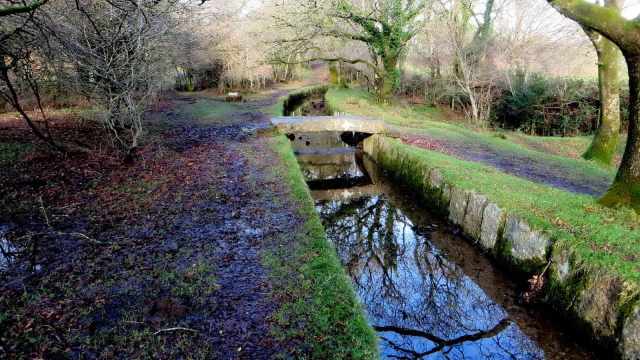
Almost at the Yelverton end of the leat.
In the afternoon, the sun really shone quite nicely. The bridge above is the third clapper bridge encountered, at SX 51737 65528.
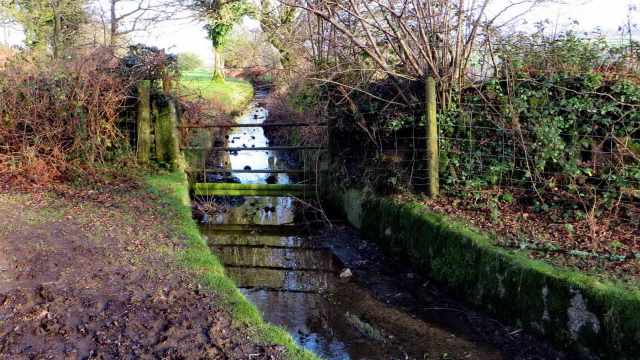
The leat where it enters Roborough Common from private farm land.
The photo above marks the end of the task.

The footbridge near the end of the leat where it runs across the Common.
The photograph above was taken near the end of the leat, looking back towards Roborough/Plymouth.
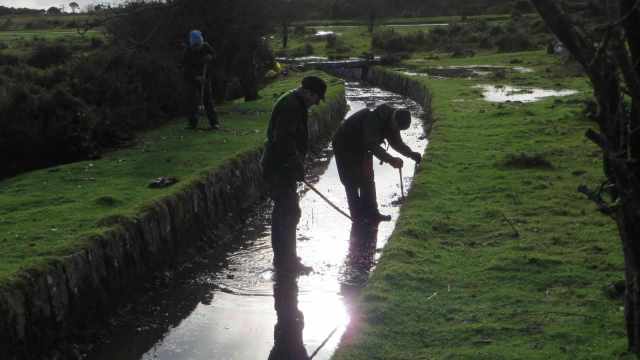
Almost silhouettes in the leat?
The caption above is just an excuse to show my age – Silhouettes .
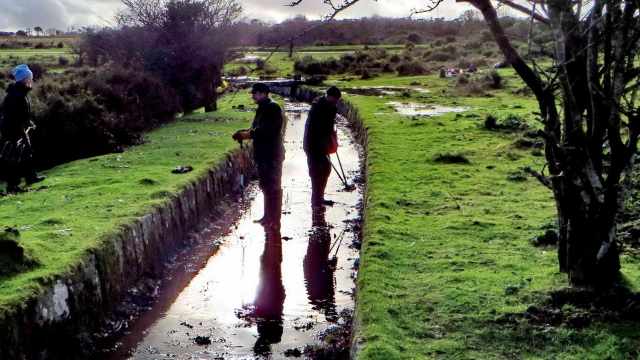
Another reflective moment at the end of the day.
The distance cleared today, from the car park to the edge of the Common, was 630 metres (689 yards).
The total length of the leat is 3,932 metres (4,300 yards or 2.11 miles); judging from GPS records (for which there is always an error of +/- approx. 3 metres). The length is made up from seven visits.
The GPS track of today’s efforts has been added to the project map in Google Satellite view, HERE.
Remember to zoom in on the map to see detail, either by mouse thumbwheel or using the “+” and “-” keys , and move around the map by “dragging” or using the four cursor arrow keys on your keyboard.